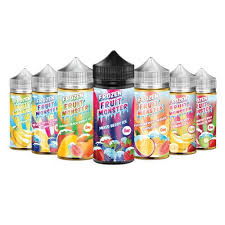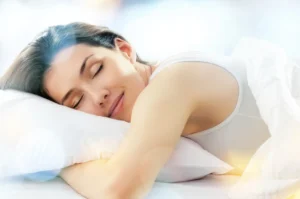How to Choose the Best Knitted Fabrics for Your Needs
When it comes to selecting the right material for your clothing, home textiles, or industrial applications, knitted fabrics stand out for their versatility, comfort, and durability. Whether you’re a fashion designer, manufacturer, or a consumer looking for the perfect fabric for your needs, understanding how to choose the best knitted fabric can be overwhelming with the various options available. In this post, we’ll break down the essential factors to consider when selecting knitted fabrics, trends, and practical solutions to help you make an informed decision.
What Are Knitted Fabrics?
Knitted fabrics are made by interlocking yarns using a series of loops. This unique method of fabric construction provides flexibility, elasticity, and a soft, comfortable feel that is ideal for many applications, from clothing to upholstery. Knitted fabrics differ from woven fabrics in terms of their structure and elasticity, making them the preferred choice for items that need to stretch, like activewear or casual clothing.
Types of Knitted Fabrics
Before diving into the details of how to choose the best knitted fabric, it’s important to understand the different types available. Each type has its own unique qualities and uses.
1. Single Knit Fabric
This is the most basic form of knitted fabric, created using a single set of yarns. It’s lighter and stretchier, making it ideal for t-shirts and lighter garments. The fabric is softer but tends to have less durability compared to double knit fabrics.
2. Double Knit Fabric
Double knit fabrics are made by interlocking two sets of yarns, providing more structure and durability. They offer excellent shape retention and are often used for dresses, skirts, and structured garments. Double knits also tend to be thicker than single knits, making them suitable for colder weather clothing.
3. Rib Knit Fabric
Rib knits are characterized by their distinct raised texture, which alternates between knit and purl stitches. This type of fabric is known for its ability to stretch, making it perfect for items like socks, cuffs, and waistbands.
4. Interlock Knit Fabric
Interlock knits are made by interlacing two layers of single knits, which makes them thicker and more stable than regular single knit fabrics. They are often used for high-quality t-shirts, loungewear, and other apparel that requires more structure without sacrificing comfort.
5. Jersey Knit Fabric
Jersey knit is one of the most commonly used fabrics in the fashion industry. It’s known for its smooth surface, softness, and elasticity. It’s commonly used for making casual clothing, such as dresses, t-shirts, and leggings. The fabric has a natural stretch, providing a comfortable fit.
How to Choose the Best Knitted Fabrics for Your Needs
Choosing the best knitted fabric for your specific needs requires careful consideration of several factors. Below, we outline key considerations that will help you make the right choice.
1. Purpose and End Use
The primary factor in choosing knitted fabric is the intended use. Are you creating a lightweight summer dress, or do you need something durable for activewear? The type of garment or item you are designing will heavily influence the fabric choice. For example:
- Activewear: Opt for moisture-wicking and breathable fabrics like jersey or interlock knit.
- Casual Clothing: For everyday wear, single knits or ribbed fabrics are ideal due to their comfort and flexibility.
- Home Textiles: If you’re looking for knitted fabrics for blankets or throws, consider using thicker double knits or chunky knits for warmth and texture.
2. Fabric Weight
Fabric weight is an essential consideration, especially when it comes to knitted fabrics. Lighter fabrics work well for layering and warmer climates, while heavier fabrics offer more structure and warmth. Be sure to check the weight of the fabric and determine if it’s suitable for the season and application you’re targeting.
- Lightweight Knits: Best for summer wear, leggings, and casual wear.
- Heavyweight Knits: Suitable for outerwear, cold-weather clothing, and home textiles like blankets.
3. Elasticity and Stretch
One of the key benefits of knitted fabrics is their elasticity. However, the degree of stretch can vary significantly between types. When selecting knitted fabrics, consider how much stretch is needed for your end product. For instance, activewear and performance clothing often require fabrics with high elasticity, while garments like dresses or skirts may require a more moderate stretch.
- High Stretch: Ideal for leggings, fitted dresses, and gym wear.
- Low Stretch: Suitable for more structured garments that don’t need to cling to the body.
4. Durability and Maintenance
Knitted fabrics generally offer more flexibility and comfort, but the durability can vary depending on the type of knit. Fabrics like double-knit and interlock offer higher durability compared to single knit fabrics. Consider how often the fabric will be used and whether it will endure multiple washes.
- Double Knit & Interlock: Offer longer-lasting durability and less pilling, making them ideal for long-term use.
- Single Knit & Jersey: Soft and comfortable but may wear out faster with frequent use.
5. Breathability and Comfort
Comfort is a critical factor when choosing fabrics for clothing. Breathable fabrics, such as those made from cotton or wool blends, are suitable for warmer weather as they allow air circulation. Meanwhile, thicker knits provide warmth and insulation for colder months.
- Cotton Knit Fabrics: Known for their breathability and softness.
- Wool Knit Fabrics: Offer warmth and are naturally insulating, making them suitable for cooler climates.
Trends in Knitted Fabrics
The demand for knitted fabrics continues to evolve with fashion and technological advancements. Below are some current trends in the knitted fabric industry:
- Sustainability: As the fashion industry shifts towards more sustainable practices, organic and recycled materials are becoming increasingly popular in knitted fabrics. Eco-friendly options such as organic cotton, bamboo, and recycled polyester are widely used.
- Smart Fabrics: With the rise of wearable technology, smart knitted fabrics that can monitor health and adjust to body temperature are gaining traction in the sports and healthcare industries.
- Pattern and Texture Innovation: Designers are incorporating unique textures, such as ribbed, cable, and jacquard knits, to add dimension and style to their collections.
Challenges in Choosing Knitted Fabrics
While knitted fabrics offer many advantages, there are also some challenges to keep in mind when selecting the right fabric:
- Pilling: Certain knitted fabrics, especially those made of synthetic fibers, are prone to pilling over time. To avoid this, choose higher-quality natural fibers or consider blends with superior durability.
- Stretch Management: Too much stretch can lead to loss of shape over time. Choosing fabrics with moderate stretch is often the best solution for maintaining structure in garments.
Conclusion
When selecting knitted fabrics, understanding your specific needs is key to making the right choice. Whether you’re looking for a fabric for activewear, casual clothing, or home textiles, considering factors like weight, stretch, durability, and comfort will ensure you select the best fabric for the job. By staying informed on the latest trends and addressing the challenges that come with choosing knitted fabrics, you can make better decisions for your design or purchase.
For high-quality knitted fabrics, Moonlight Fabric provides a variety of textiles that cater to the diverse needs of different industries, ensuring the best material for your products.













